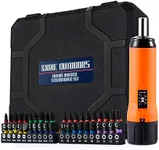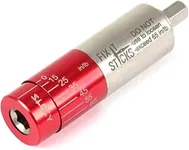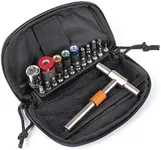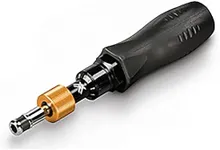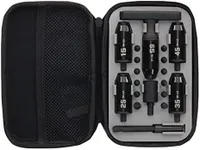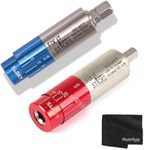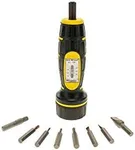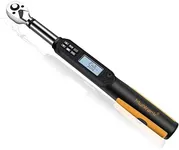Buying Guide for the Best Torque Wrench For Scope Mounting
Choosing the right torque wrench for scope mounting is crucial to ensure that your scope is securely and accurately mounted on your firearm. A torque wrench helps you apply the correct amount of force to the screws, preventing damage to the scope or the firearm and ensuring consistent performance. Here are some key specifications to consider when selecting a torque wrench for scope mounting, along with explanations to help you make an informed decision.Torque RangeThe torque range of a wrench indicates the minimum and maximum amount of force it can apply. This is important because different scope mounts and rings require specific torque settings to avoid over-tightening or under-tightening. For scope mounting, a torque range of 10-65 inch-pounds is typically sufficient. If you are mounting a lightweight scope, you might need a lower torque setting, while heavier scopes may require higher settings. Always refer to the manufacturer's recommendations for the correct torque specifications.
AccuracyAccuracy refers to how precisely the torque wrench can apply the specified amount of force. This is crucial for ensuring that each screw is tightened to the exact specification, which helps maintain the integrity of the scope mount. Look for a torque wrench with an accuracy of +/- 4% or better. Higher accuracy ensures that you are not over-tightening or under-tightening the screws, which can affect the performance and longevity of your scope.
Scale TypeTorque wrenches come with different types of scales, such as analog (dial or beam) and digital. Analog scales are simple and reliable, but they require you to read the torque value manually. Digital scales, on the other hand, provide a precise readout and often include features like audible alerts when the desired torque is reached. If you prefer ease of use and precision, a digital torque wrench might be the best choice. However, if you are comfortable with manual readings and want a more budget-friendly option, an analog wrench will suffice.
Size and ErgonomicsThe size and ergonomics of the torque wrench affect how comfortable and easy it is to use. A compact and lightweight wrench is easier to handle, especially in tight spaces. Ergonomic handles with a good grip can reduce hand fatigue and improve control. Consider how the wrench feels in your hand and whether it allows you to apply torque comfortably and accurately. If you plan to use the wrench frequently, investing in one with good ergonomics is worthwhile.
Build Quality and DurabilityThe build quality and durability of the torque wrench determine how long it will last and how well it will perform over time. Look for wrenches made from high-quality materials like steel or aluminum, which offer strength and resistance to wear and tear. A well-built torque wrench will maintain its accuracy and reliability even after repeated use. If you need a tool that will last for years and withstand regular use, prioritize build quality and durability.
CalibrationCalibration ensures that the torque wrench provides accurate readings. Over time, wrenches can lose their calibration, leading to inaccurate torque application. Some wrenches come with a certificate of calibration, indicating that they have been tested and verified for accuracy. It's also important to check if the wrench can be recalibrated, as this will extend its useful life. Regular calibration checks are essential for maintaining the accuracy and reliability of your torque wrench.
